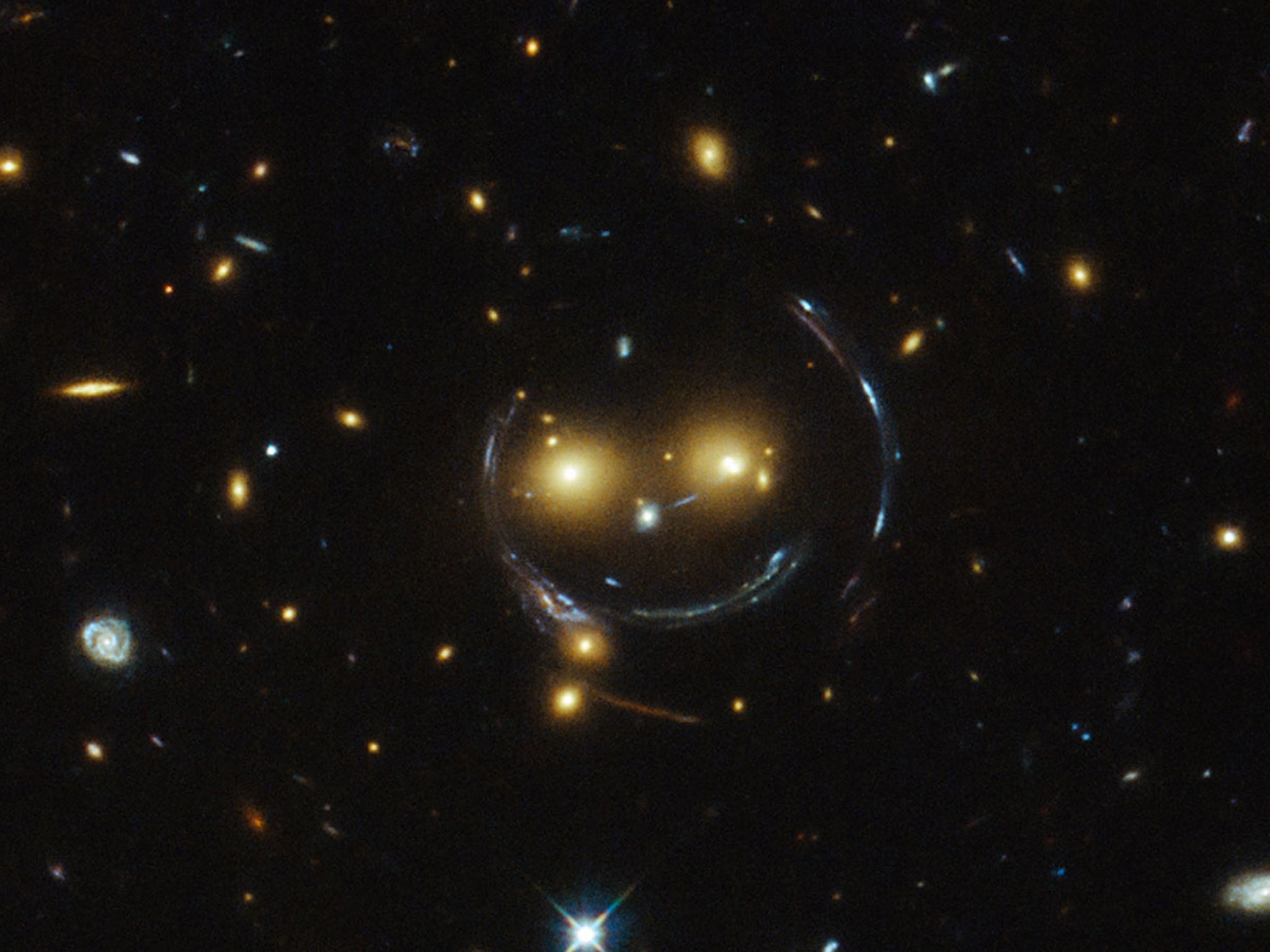Satellite pictures show space emoji looking down on us
Picture is actually two huge galaxies, and arcs made by gravitational lensing

Space is often seen as an uncaring, cold void. And while that’s probably true, at least it’s smiling at us.
New photos of the galaxy cluster SDSS J1038+4849 show what looks like a huge, celestial emoji staring down at the picture.
The two eyes that can be seen are actually very bright galaxies. And the smile lines and side of the face are actually arcs cause by an effect known as strong gravitational lensing.
Galaxy clusters are the most massive structures in the universe. They have such a strong gravitational pull that they can warp spacetime around them — which means that they can work as “cosmic lenses”, distorting the light around them and causing the arcs seen in the photo.
The specific kind of arc seen in the photo is known as an Einstein Ring, and comes about when the source, lens and observer are all exactly aligned.
It was spotted by amateur astronomer Judy Schmidt, who submitted the image to the Hubble’s Hidden Treasures competition, which rewards people for spotting interesting things in the space telescope’s data.
Hubble was launched in 1990 and has made more than a million observations since. Many of the most spectacular pictures — including the famous ‘pillars of creation’ picture, among other similarly grand images — are collected at the Hubble website.
Join our commenting forum
Join thought-provoking conversations, follow other Independent readers and see their replies
Comments